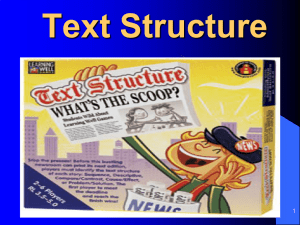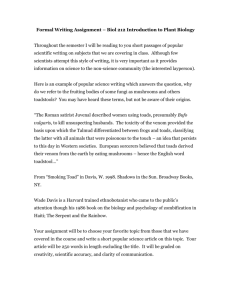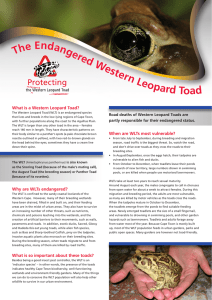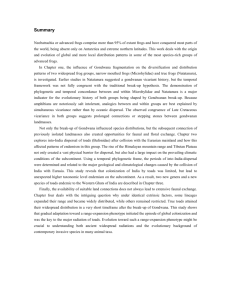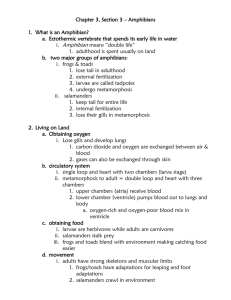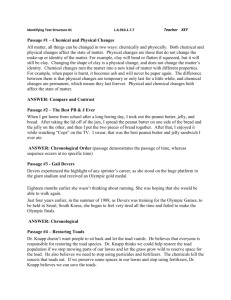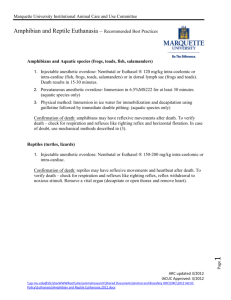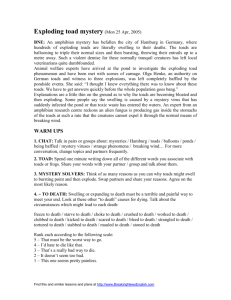Fowler's Toad Habitat Requirements Information
advertisement
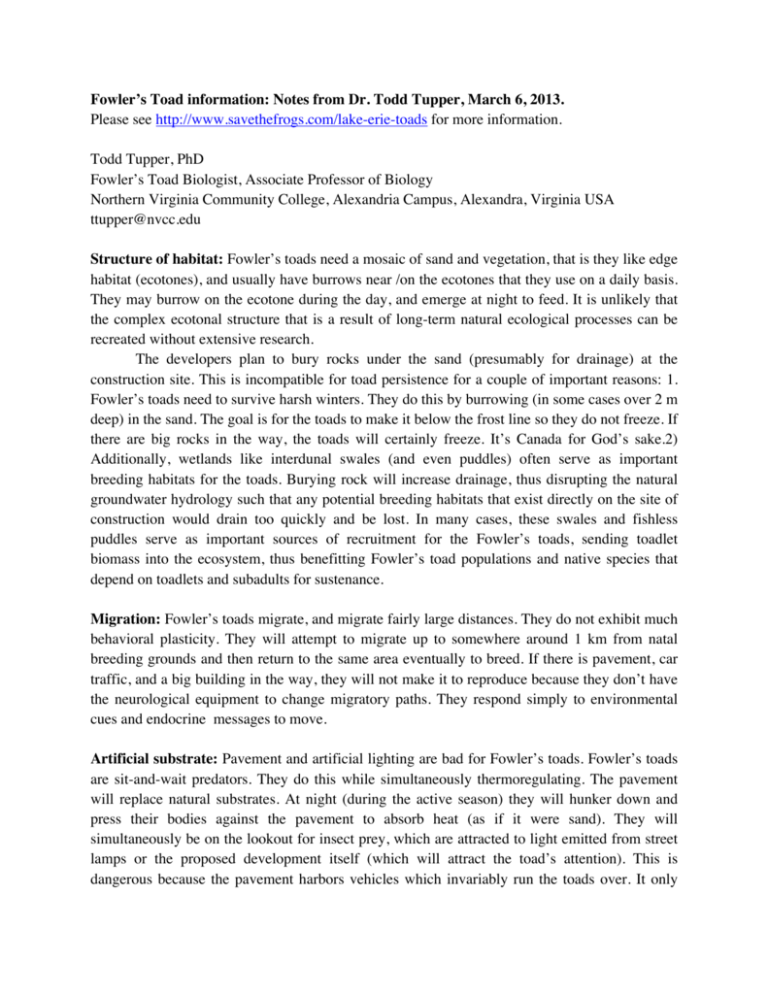
Fowler’s Toad information: Notes from Dr. Todd Tupper, March 6, 2013. Please see http://www.savethefrogs.com/lake-erie-toads for more information. Todd Tupper, PhD Fowler’s Toad Biologist, Associate Professor of Biology Northern Virginia Community College, Alexandria Campus, Alexandra, Virginia USA ttupper@nvcc.edu Structure of habitat: Fowler’s toads need a mosaic of sand and vegetation, that is they like edge habitat (ecotones), and usually have burrows near /on the ecotones that they use on a daily basis. They may burrow on the ecotone during the day, and emerge at night to feed. It is unlikely that the complex ecotonal structure that is a result of long-term natural ecological processes can be recreated without extensive research. The developers plan to bury rocks under the sand (presumably for drainage) at the construction site. This is incompatible for toad persistence for a couple of important reasons: 1. Fowler’s toads need to survive harsh winters. They do this by burrowing (in some cases over 2 m deep) in the sand. The goal is for the toads to make it below the frost line so they do not freeze. If there are big rocks in the way, the toads will certainly freeze. It’s Canada for God’s sake.2) Additionally, wetlands like interdunal swales (and even puddles) often serve as important breeding habitats for the toads. Burying rock will increase drainage, thus disrupting the natural groundwater hydrology such that any potential breeding habitats that exist directly on the site of construction would drain too quickly and be lost. In many cases, these swales and fishless puddles serve as important sources of recruitment for the Fowler’s toads, sending toadlet biomass into the ecosystem, thus benefitting Fowler’s toad populations and native species that depend on toadlets and subadults for sustenance. Migration: Fowler’s toads migrate, and migrate fairly large distances. They do not exhibit much behavioral plasticity. They will attempt to migrate up to somewhere around 1 km from natal breeding grounds and then return to the same area eventually to breed. If there is pavement, car traffic, and a big building in the way, they will not make it to reproduce because they don’t have the neurological equipment to change migratory paths. They respond simply to environmental cues and endocrine messages to move. Artificial substrate: Pavement and artificial lighting are bad for Fowler’s toads. Fowler’s toads are sit-and-wait predators. They do this while simultaneously thermoregulating. The pavement will replace natural substrates. At night (during the active season) they will hunker down and press their bodies against the pavement to absorb heat (as if it were sand). They will simultaneously be on the lookout for insect prey, which are attracted to light emitted from street lamps or the proposed development itself (which will attract the toad’s attention). This is dangerous because the pavement harbors vehicles which invariably run the toads over. It only takes one vehicle to wipe out most of the toads while warming and feeding. The first defensive response of the toads is to hunker in a depression in sand. When they hunker in response to a car, it means death for the Fowler’s toad. Increase in generalist predator populations: Trash, food and other human waste from the development will attract mammalian predators which prey upon toads during the breeding season (when the males are calling) and depredate toadlets after emergence. Raccoons for instance will enter breeding aggregations and eat the entire toad and leave the heads behind (b/c paratoid glands). The toads likely tune out (with an auditory locking mechanism) the approaching predators because they are focused on sounds associated with breeding. Relocation plan: This plan (to simply move any toads that they happen to see after a day of construction to some secret location) is absurdly uninformed and reflects the developer's lack of knowledge of amphibian biology. Habitat loss is the problem for this species. If a toad could just be moved somewhere else when development takes place, then I suspect the problem of global amphibian declines wouldn't really exist. If repatriation were to be successful, one would have to take eggs from a wetland and put those eggs in a wetland that could positively support larval development and metamorphosis. Additionally, the mosaic of ecotones in the uplands that I mentioned before would have to be in place, and should encompass a 1000 m radius around the breeding site. You can't simply move a Fowler’s toad somewhere else and expect it to live because they will home, and when they attempt to home they likely will meet a road which usually means death for the toad. If the relocation site is close to the site they were taken from, they will go back (or die trying). Unless there is ample breeding and non-breeding habitat in the repatriation site, then there is a near 0% chance of survival of translocated adults and subadult toads. Furthermore, the adult toads (if relocated) will always attempt to return to wetlands near where they emerged from (natal ponds). They do this based on celestial, olfactory, geographic and suspected magnetic cues. So even if moving the toads out of the way of machinery at the end of the work day spares them for the time being, we can consider those genes removed from the gene pool, as they will likely not relocate a suitable breeding site. If there is documented appropriate breeding and non-breeding habitat, then an assessment would first need to take place: One would have to adequately estimate the existing population size (with limited error) and then determine the carrying capacity of the parcel. If there was a large enough capacity for that parcel then eggs would have to be introduced into the system, not toads. Because these are R selected animals, we would need a lot of eggs, and it would likely have to continue for quite a few years. Otherwise it is an uninformed crap shoot. With some species a guesstimate might prove useful, but this is not sound enough to ensure the survival of a federally protected subclimax community habitat specialist species. I am new to this particular project, but from what I have seen and considering that the Fowler’s toad is federally protected, the mitigation plan is a total embarrassment General comments: There is nothing good that can come out of this proposed development. Fowler’s toads are critical trophic links between freshwater and terrestrial ecosystems and are protected for good reason. In the United States they are not a species of concern (yet). However, after having read the literature and looking at historical records, it is clear that these toads are subclimax community habitat specialists that are negatively impacted by development. There are many areas throughout the Northeastern United States where populations have been extirpated. There are areas in New York and New Jersey where repatriation efforts have failed. Even in my study, which took place in a relatively well-protected area, I was able to see a clear negative relationship between development and toad abundance. It is beyond me that in a country where these animals are federally protected, that this sort of thing can go on. I think that it is fair to say that as a society we could do without an additional condominium complex and shopping area. However, the wanton loss of more wildlife is catastrophic because every time we needlessly eliminate a group of animals it’s like we are burning down a library before we have even read the books. Each animal population contains a wealth of molecular, evolutionary and ecological information that can provide us with critical and meaningful insight into our own existence. That being said, I commend “Save the Frogs” for taking on such a task and am proud of your efforts. It helps me a great deal to know there are people like you speaking out for organisms that can't speak for themselves. Todd

